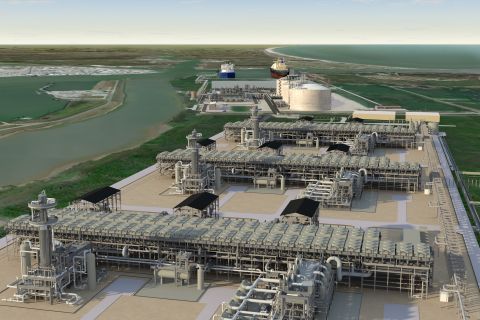Operators using coiled tubing (CT) remedial and stimulation treatments in deep or deviated wells often must split the CT string into two reels due to limited crane capability. Once split into two separate reels, CT must then be welded together on the platform. A time-consuming process that requires close inspection, welding can compromise the CT’s fatigue life even if done correctly.
To more reliably join two or more CT drums together onboard a platform, Baker Hughes offers the DuraLink spoolable connector. The tool reliably splices two CT strings with an overall faster installation time and a longer fatigue life than a butt weld. Since winning the stimulation category of Hart Energy’s 2008 Meritorious Awards for Engineering Innovation, the DuraLink spoolable connector has been used in projects offshore India and Nor-way, according to Manfred Sach, CT drilling project manager for Baker Hughes.
The tool allows operators to select the correct CT size required by operational needs rather than be determined by offshore crane capacity. The technology provides a joining method for the CT strings that does not depend on welding and does not require specialized personnel or inspection equipment. In addition, the DuraLink spoolable connector has proven resistant to acid corrosion and is considered safer and more cost-effective than boat spooling.
“Since 2008, another 15 operations have been performed [using the DuraLink spoolable connector] involving 77 runs of CT in/out of hole,” Sach said. “This is a relatively low number of applications compared to the overall CT market, but all have been in the more demanding offshore market, targeting higher end applications.”
During a two-well campaign in the North Sea that required chemical treatment, scale milling, perforating, and scale squeeze, the operator used DuraLink technology to complete 17 round trips in total – one for the first well and 16 for the second – according to a 2008 case study by the Society of Petroleum Engineers (SPE) in SPE paper 113708. The operator initially was restricted to using 1.5-in. CT due to crane limitations but later determined that size would not be able to achieve the desired cleanout results. The operator decided to use 2 3/ 8 -in. CT string with one spoolable connector.
According to the case study, the first well required a scale squeeze operation and asphaltene cleanout. In the second well, the operator encountered difficulty milling out hard scale at a depth of 6,600 m (21,654 ft). Finally, the scale was removed after downhole tool assembly optimization, and the operator was able to perform a depth correlation run, add a perforation interval, and conduct a scale squeeze. The DuraLink technology provided “resistance against mechanical wear while completing the operation,” according to the case study.
The DuraLink spoolable connector continues to provide a viable solution to operators and has not been overshadowed by advancing technology.
Baker Hughes is working on an updated version of the spoolable connector. “A second-generation design of the connector has been developed and tested with increased technical capabilities, including larger internal diameters and increased fatigue life,” Sach said.
Recommended Reading
Exxon’s Guyana Gas Project a “Win-Win,” Set for Hook-up by Year-end ‘24
2024-04-26 - Exxon Mobil Corp. CEO Darren Woods said the company’s gas-to-power project in Guyana as a “win-win proposition particularly for the people of Guyana” when completed and hooked-up by year-end 2024.
Segrist: The LNG Pause and a Big, Dumb Question
2024-04-25 - In trying to understand the White House’s decision to pause LNG export permits and wondering if it’s just a red herring, one big, dumb question must be asked.
Texas LNG Export Plant Signs Additional Offtake Deal With EQT
2024-04-23 - Glenfarne Group LLC's proposed Texas LNG export plant in Brownsville has signed an additional tolling agreement with EQT Corp. to provide natural gas liquefaction services of an additional 1.5 mtpa over 20 years.
US Refiners to Face Tighter Heavy Spreads this Summer TPH
2024-04-22 - Tudor, Pickering, Holt and Co. (TPH) expects fairly tight heavy crude discounts in the U.S. this summer and beyond owing to lower imports of Canadian, Mexican and Venezuelan crudes.
What's Affecting Oil Prices This Week? (April 22, 2024)
2024-04-22 - Stratas Advisors predict that despite geopolitical tensions, the oil supply will not be disrupted, even with the U.S. House of Representatives inserting sanctions on Iran’s oil exports.




